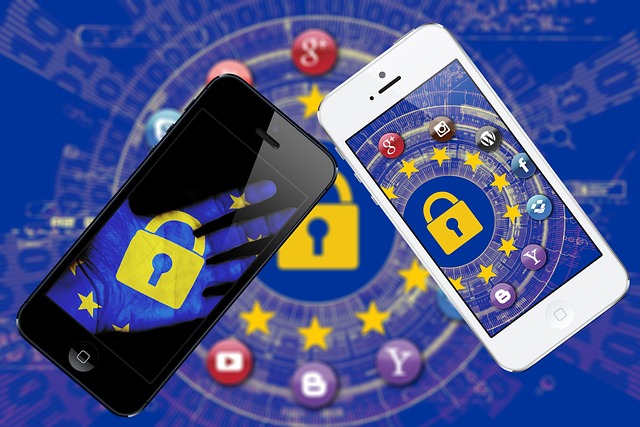In recent years the conversation about technology has shifted from tools and devices to the values and habits that guide their use. Communities are no longer passive recipients of digital advances; they actively shape how technology is integrated into daily life. At the heart of this transformation lies a growing set of educational innovations that teach not only skills but also the etiquette needed to navigate an increasingly connected world.
Digital Literacy as a Community Asset
Digital literacy has become a foundational element of modern community life. Educational innovations that focus on inclusive learning environments—such as mobile-first tutorials, open-source simulations, and community-driven coding clubs—help residents of all ages build confidence in using technology responsibly. When literacy is taught through collaborative projects, it naturally reinforces respectful communication and a shared understanding of digital norms.
Key Educational Innovations Driving Technology Etiquette
-
Immersive Virtual Reality (VR) Workshops
VR environments allow participants to experience scenarios that would be difficult or impossible in the real world. For instance, a VR empathy module can place users in a simulation where they must interpret tone and context in virtual conversations. This hands-on experience strengthens awareness of how words and gestures can be perceived, cultivating a culture of mindful interaction.
-
AI-Driven Mentoring Platforms
Artificial intelligence can provide real-time feedback on communication style. In an online forum, an AI bot may flag passive-aggressive language or suggest more inclusive phrasing. Over time, learners adapt to the guidance, internalizing polite digital conduct without relying on punitive measures.
-
Collaborative Coding Hubs
Public-access coding hubs equipped with pair-programming stations encourage shared problem solving. The practice of code review, version control, and constructive critique teaches a broader etiquette: respect for others’ ideas, clear documentation, and patience when navigating differences.
Impact on Social Trends
The ripple effects of these educational innovations extend beyond individual behavior to shape community-wide social trends. They influence how people gather, share information, and solve problems in the digital realm.
Remote Collaboration as the New Normal
Virtual meeting etiquette has become a critical skill. Communities that embed etiquette training into remote collaboration tools—such as mandatory mute etiquette, clear agenda posting, and respectful turn-taking—see higher participation rates and reduced meeting fatigue. The result is a more inclusive environment where all voices are heard.
Microlearning and On-Demand Etiquette
Microlearning modules deliver bite-sized lessons on topics like “Avoiding Misinterpretation of Emojis” or “Citing Sources in Social Media.” Because learners can complete a module in under five minutes, they are more likely to absorb and practice the material. Over time, these short bursts accumulate into a community culture that values clarity and respect.
Inclusive Design as a Shared Responsibility
“Design for diversity is not a feature—it is a foundation.” — Community Tech Lead
Educational programs that teach inclusive design principles—such as color contrast standards, accessibility testing, and multilingual content—empower community members to create digital spaces that welcome everyone. This inclusivity reduces barriers and promotes a sense of belonging, reinforcing positive social trends.
Case Studies: Communities in Action
-
Community Library Digital Literacy Hub
In a midwestern town, the local library partnered with a nonprofit to launch a “Digital Etiquette Lab.” Residents attended workshops that blended hands-on device usage with role-playing exercises focused on respectful online discussion. After six months, survey data indicated a 35% increase in participants’ confidence discussing sensitive topics on social media, and the library reported a 50% rise in volunteer mentors.
-
High School Hackathon with a Social Code
During a regional hackathon, students were required to incorporate an “Ethics Checklist” into every project. The checklist, developed through a community consultation process, included prompts about user privacy, respectful language in user interfaces, and inclusive user testing. The event produced several prototypes that won local awards and sparked an ongoing conversation about technology etiquette in schools.
Challenges and Community-Based Solutions
While the benefits are clear, communities face obstacles such as limited funding, digital divides, and resistance to change. Addressing these challenges requires a collaborative approach that leverages existing resources and fosters ownership.
- Funding Gaps: Communities can apply for technology grants, partner with local businesses for sponsorships, or implement low-cost, open-source platforms that reduce overhead.
- Digital Divide: Mobile-first educational innovations ensure that learners without high-speed internet can still access content. Community Wi-Fi hotspots paired with device loan programs close the gap.
- Change Resistance: Pilot projects that demonstrate tangible benefits—such as improved meeting efficiency or higher user satisfaction—can persuade skeptics and build momentum for broader adoption.
Future Outlook: A Community-Centric Digital Landscape
As technology continues to evolve, educational innovations will remain the linchpin of responsible usage. Emerging trends such as decentralized learning networks, AI-powered peer feedback, and immersive social simulations will further embed etiquette into the fabric of community life. Communities that embrace these tools will cultivate digital ecosystems where respect, inclusivity, and collaboration are not optional but intrinsic.




